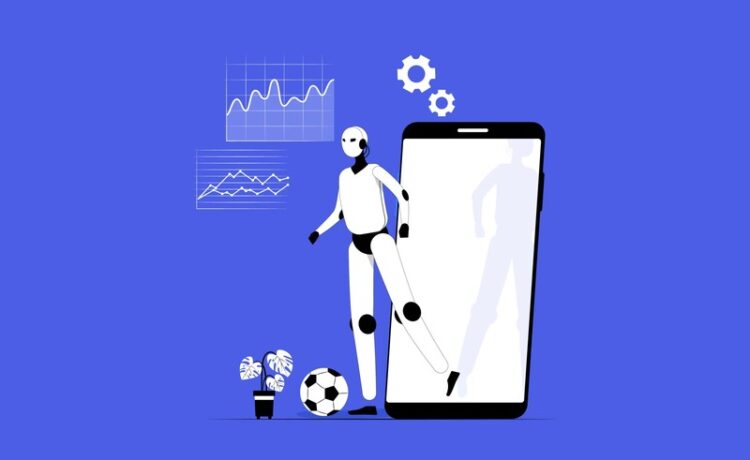Sports analytics has come a long way from simple statistics and player evaluations. In recent years, the field has been revolutionized by cutting-edge technology and advanced methodologies, making game predictions more accurate and insightful than ever before. From AI to machine learning, these trends are reshaping how teams, analysts, and fans understand and predict outcomes across various sports. Let’s explore the top five emerging trends in sports analytics that are driving this evolution and what the future might hold.
1. Artificial Intelligence and Machine Learning: The New Playmakers
Artificial Intelligence (AI) and machine learning are at the forefront of the sports analytics revolution. These technologies enable the processing of vast amounts of data at incredible speeds, identifying patterns and correlations that are impossible for humans to detect. AI algorithms can analyze player performance, weather conditions, historical matchups, and even psychological factors to generate highly accurate predictions.
For example, in soccer, machine learning models can predict the likelihood of a goal based on player positioning, movement patterns, and historical data. In basketball, AI can evaluate the effectiveness of different lineups in real-time, adjusting strategies on the fly. As these technologies continue to advance, we can expect even more precise and nuanced predictions, transforming how we watch and understand sports.
2. Wearable Technology and Real-Time Data
Wearable technology is another game-changer in sports analytics. Devices like GPS trackers, heart rate monitors, and accelerometers provide real-time data on player performance, including speed, fatigue levels, and injury risk. This data is invaluable for teams looking to optimize player performance and make informed decisions during games.
Injuries, for instance, can be better predicted and prevented by analyzing the strain on players in real-time. Coaches can adjust training loads and strategies based on this data, reducing the likelihood of injuries and ensuring players are at their peak during critical moments. The integration of wearable tech into sports analytics allows for a more dynamic and responsive approach to game predictions.
3. Advanced Statistical Models: Beyond the Box Score
Traditional sports statistics like points, rebounds, and goals have been the foundation of game analysis for decades. However, the emergence of advanced statistical models is pushing the boundaries of what’s possible. Metrics such as Expected Goals (xG) in soccer, Player Efficiency Rating (PER) in basketball, and Win Probability Added (WPA) in baseball are providing deeper insights into player and team performance.
These models consider context-specific variables, such as shot quality, game situation, and opponent strength, to offer a more accurate picture of potential outcomes. As these metrics become more sophisticated, they are helping to refine game predictions, offering teams and analysts a competitive edge.
4. Big Data Integration: Connecting the Dots
The sheer volume of data available in sports today is staggering. From player statistics and game footage to social media sentiment and betting patterns, the challenge lies in integrating these diverse data sources into a cohesive analysis. Big data analytics platforms are rising to this challenge, enabling the synthesis of vast datasets to create more accurate predictive models.
For example, by combining traditional stats with fan sentiment analysis from social media, analysts can gauge the psychological state of teams and players, which often influences performance. This holistic approach to data integration is leading to more comprehensive and accurate game predictions across sports.
5. Predictive Analytics in Sports Betting
Predictive analytics is not just a tool for teams and analysts; it’s also revolutionizing sports betting. Sites like Sports Champion Predictor leverage advanced algorithms and data analytics to offer highly accurate betting predictions. By analyzing a multitude of variables, including player form, team dynamics, and external factors like weather, these platforms provide bettors with an edge in making informed decisions.
As predictive analytics continues to evolve, it’s likely that we’ll see even more sophisticated models that can adjust in real-time, responding to in-game developments and offering live betting predictions with unprecedented accuracy.
The Future of Sports Analytics: What’s Next?
The future of sports analytics is bright and full of potential. We can expect AI and machine learning to become even more integrated into sports, with real-time predictive models that adjust to every nuance of the game. Wearable tech will likely become more advanced, offering deeper insights into player health and performance. As big data continues to grow, the ability to synthesize and analyze this information will lead to even more precise and actionable predictions.
Moreover, as sports analytics becomes more accessible, we’ll likely see a democratization of these tools, with fans and amateur analysts gaining access to the same powerful insights as professional teams. This could transform the fan experience, making it more interactive and informed.
Conclusion: Embracing the Analytics Revolution
The field of sports analytics is rapidly evolving, driven by technological advancements and a growing understanding of the factors that influence game outcomes. From AI and machine learning to wearable tech and big data, these trends are making game predictions more accurate and reliable than ever before. Whether you’re a coach, player, analyst, or fan, embracing these emerging trends can provide a deeper understanding of the game and a greater appreciation for the complexities of sports.














